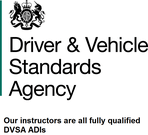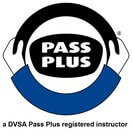
There are many makes and models of learner driver training vehicles in Manchester.
An ideal learner driver car will have the following:
A drivers seat which is height adjustable
If you have chosen to learn with a driving school or driving instructor who uses base model vehicles i.e. the bottom of the range model, you may find that the vehicle you are going to learn in has a fixed seat height.
This may be ok for some drivers but as people are all different in height and leg lengths some drivers may find that they have a limited view over the steering wheel.
Air Conditioning
You could say you don't really need a car with air conditioning. What happens though if you are undertaking a 2 hour driving lesson and the outside temperature is 25°C or more? Well the inside of your vehicle becomes even hotter due to the car windows intensifying the heat. Air Conditioning will cool your vehicle down so that you can concentrate and keep relaxed on your driving lesson.
Good rear side window visibility
Some modern cars have been designed to look very futuristic but in doing so this has compromised the view out of the rear side windows.
This may not create an issue for a qualified driver but a learner driver needs to have good visibility out of the rear side windows to be able to complete their reversing exercises with good observation so that they can respond as required to any hazards when reversing.
A forgiving clutch
Diesel cars normally have a more forgiving and easy to control clutch because of the way they have been designed to drive. Diesel cars are normally turbocharged so are designed to accelerate differently than a naturally aspirated vehicle. You can also get a turbocharged petrol vehicle which comes with a more forgiving clutch. Standard 1.2 naturally aspirated base model cars are not only sluggish to accelerate but they can also have clutches which are unforgiving to learner drivers.
Tyres which are good quality
Tyres come with different tread patterns and compounds of rubber. Cheaper remould and budget style tyres last a very long time but have a hard rubber compound. More expensive tyres have a softer compound of rubber and grip the road better but don't last as long. Better quality of tyres means as a learner driver you can stop sooner and there is less chance of creating wheel spin if you accidently accelerate too much when moving off in the wet. Recommended tyre makes are Goodyear, Bridgestone and Yokohama.
Size of vehicle
Most learner cars are small to medium sized vehicles e.g. Vauxhall Corsa and Vauxhall Astra or Toyota Yaris and Toyota Auris. The last thing a learner driver needs is to be driving a big cumbersome training vehicle. When learning to drive you are developing your spatial awareness skills and this process is helped by learning in either a small or medium sized vehicle.
Colour of vehicle
The colour of your training vehicle doesn't have any bearing on any of the points raised above. It is worth pointing out though that bright red and yellow cars are not ideal for people learning to drive. Ideally you want a color that is more neutral e.g. Grey / Blue / Silver / Black. If you are in the early stages of driving and find that you are still at a stalling phase this is only compounded by driving a brightly coloured car!
Manchester Driver Training use modern, air conditioned, dual controlled, small and medium sized training vehicles. If you would like any further information regarding our training vehicles please contact us by email on info@manchesterdrivertraining.co.uk.







